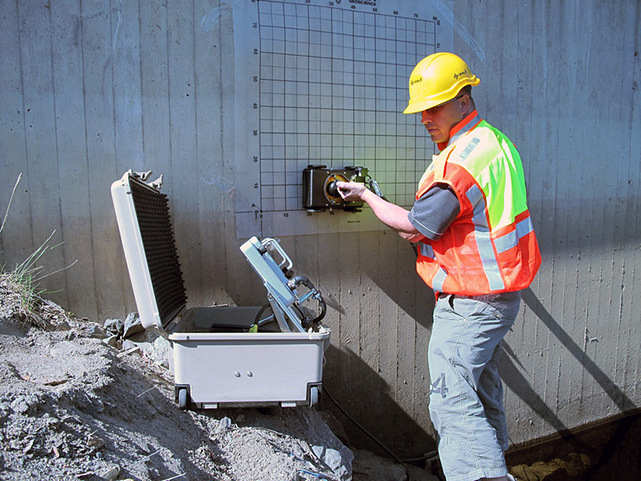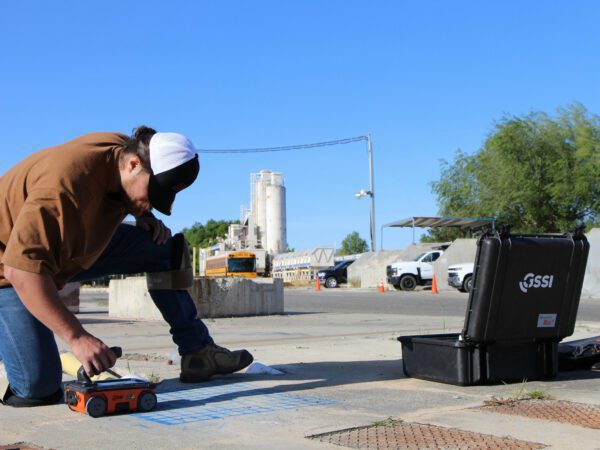Taking Full Advantage Of Performance and Lessening Dangers: The Function of Concrete Scanning in Building And Construction
In the realm of construction, where accuracy and safety are critical, the utilization of concrete scanning innovation has come to be a vital device for task managers and engineers alike. By harnessing advanced scanning approaches, building groups can navigate intricate settings with enhanced performance while minimizing prospective dangers that could jeopardize both budgets and timelines. The detailed dancing between maximizing efficiency and lessening dangers in building and construction joints on the capacity to peer below the surface area, disclosing a world of covert challenges and possibilities. The duty of concrete scanning in this fragile balance is not simply helpful yet transformative, supplying a glimpse right into a future where expensive blunders are preempted, security is prioritized, and high quality is non-negotiable.
Value of Concrete Scanning
Concrete scanning plays an important duty in making certain the architectural integrity and security of construction projects by accurately finding embedded items and prospective hazards within concrete structures. By utilizing numerous scanning modern technologies such as ground-penetrating radar (GPR) and electro-magnetic induction, construction teams can recognize rebar, post-tension wires, conduits, and other surprise obstacles prior to boring, cutting, or coring right into concrete. This aggressive method helps prevent pricey problems, injuries, and job delays that may arise from inadvertently striking these objects throughout building and construction activities.
In addition, the exact mapping of ingrained items guarantees the efficient execution of construction strategies, reducing the risk of mistakes and making sure the long life and resilience of the constructed setting. Inevitably, spending in concrete scanning solutions contributes to the overall success and security of building and construction jobs.

Advanced Technology in Construction
Provided the boosting need for accuracy and efficiency in construction methods, the combination of innovative modern technology has actually come to be important in improving task outcomes and making certain optimal safety and security procedures. BIM permits for better collaboration amongst stakeholders, improved visualization of the task, and boosted decision-making throughout the building process. The implementation of Enhanced Fact (AR) and Digital Truth (VR) modern technologies in construction design and planning stages allows stakeholders to envision the final product, recognize prospective concerns, and make needed modifications prior to building and construction starts.

Advantages of Item Mapping
The usage of things mapping modern technology in building jobs supplies a plethora of advantages that improve task planning and implementation. Among the key advantages of item mapping is its capacity to supply precise and thorough info regarding the place of below ground utilities, architectural components, and various other things within the building and construction site. This info is important for ensuring that excavation and exploration tasks are accomplished safely and efficiently, minimizing the danger of damages to existing framework.
Additionally, things mapping technology allows construction groups to create exact 3D versions of the site, enabling much better visualization of the job and boosted sychronisation amongst various trades - RainierGPR Concrete Scanning. This boosted spatial awareness aids to recognize possible clashes and disputes early in the planning stages, decreasing the demand for costly rework and delays during building and construction
In addition, things mapping can likewise enhance the documents procedure by supplying electronic documents of the website in the past, throughout, and after building and construction. These records act as valuable references for future upkeep and improvement jobs, ultimately boosting the lasting efficiency and sustainability of the constructed atmosphere.
Stopping Costly Mistakes
Object mapping technology's role in building and construction expands beyond boosting task planning and execution to include a vital element: preventing pricey blunders. By using innovative concrete scanning methods, building and construction teams can determine possible risks such as rebar blockage, post-tension wires, or spaces within concrete frameworks. Generally, the aggressive use of concrete scanning innovations in construction projects significantly minimizes the threat of errors and ultimately adds to set you back financial savings and task performance.
Ensuring Security and High Quality
To maintain the highest criteria of safety and high quality in building and construction jobs, the application of concrete scanning modern technology plays a critical function. By using sophisticated scanning methods such as ground-penetrating radar (GPR) and electro-magnetic induction, building and construction groups can spot prospective risks concealed within concrete frameworks before starting any type of work. This positive technique not only lessens the threat of accidents on the construction website yet likewise ensures the structural integrity of the building.
Concrete scanning likewise aids in verifying the placement of rebar, channels, and post-tension cords, assuring that these components are click this properly placed as per the Bonuses style requirements. This accuracy in finding critical components assists prevent mistakes throughout the construction procedure, ultimately resulting in a better ended up item. Additionally, by recognizing any type of anomalies or incongruities within the concrete beforehand, required modifications can be made promptly, minimizing the possibility of rework and expensive hold-ups.
In significance, concrete scanning modern technology works as a useful tool in guarding both the safety of construction workers and the general quality of the built atmosphere. Its capability to make sure and identify prospective threats adherence to layout criteria makes it a crucial asset in modern building practices.

Verdict
To conclude, concrete scanning plays an essential function in optimizing performance and lessening threats in building and construction projects. By utilizing innovative innovation for things mapping, possible costly mistakes can be avoided, making certain safety and security and top quality of the final structure. It is important for building firms to focus on using concrete scanning to boost efficiency, minimize risks, and supply premium results in their jobs.
Concrete scanning plays an essential role in guaranteeing the structural integrity and safety and security of construction jobs by precisely spotting embedded objects and possible threats within concrete frameworks. The execution of Enhanced Reality (AR) and Digital Fact (VIRTUAL REALITY) technologies in construction style and preparation phases makes it possible for stakeholders to envision the final item, recognize potential problems, and make needed adjustments prior to construction begins. By utilizing advanced concrete scanning strategies, construction groups can recognize prospective dangers such as rebar congestion, post-tension wires, or spaces within concrete structures. In general, the proactive use of concrete scanning technologies in building other and construction projects substantially decreases the risk of errors and eventually contributes to cost savings and job efficiency.
To maintain the greatest requirements of safety and quality in building and construction projects, the application of concrete scanning technology plays a critical function.
Comments on “Why Select RainierGPR Concrete Scanning for Accurate Subsurface Analysis”